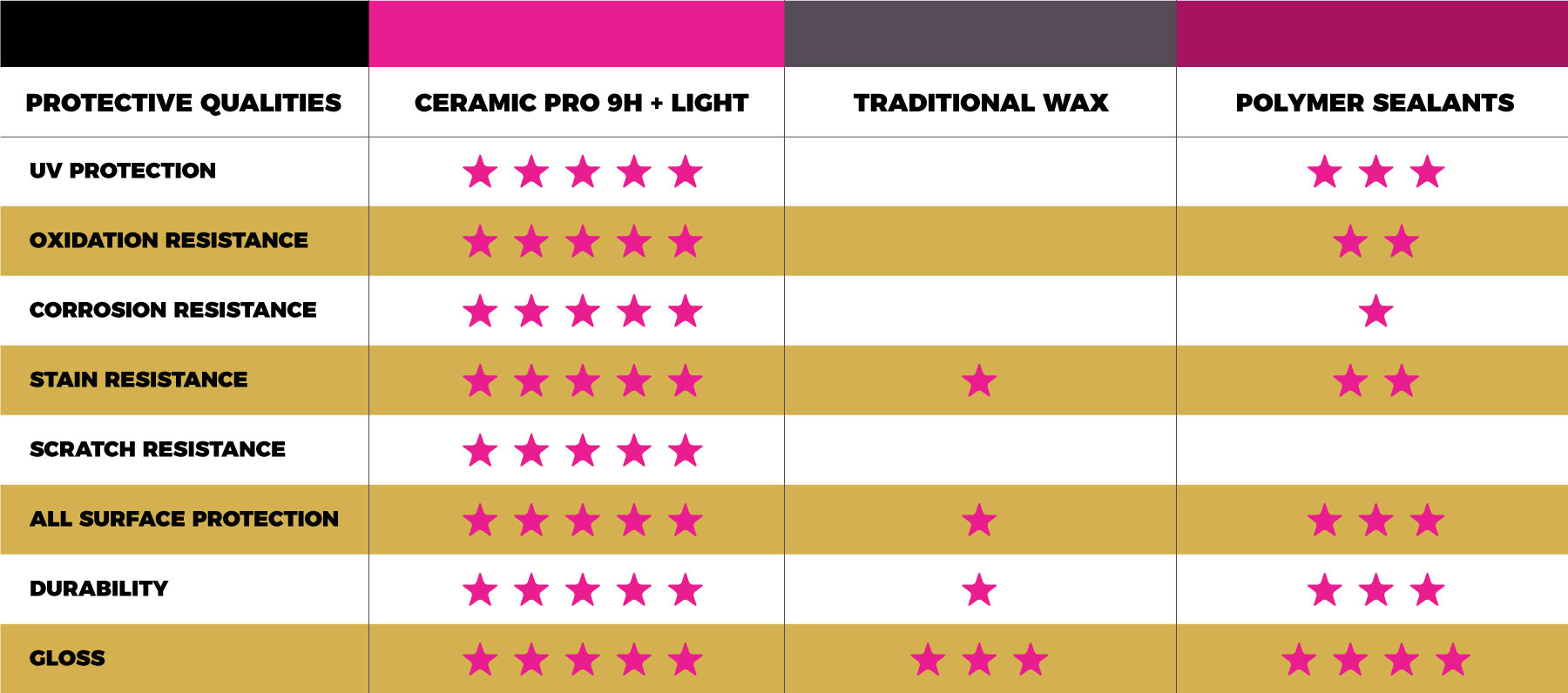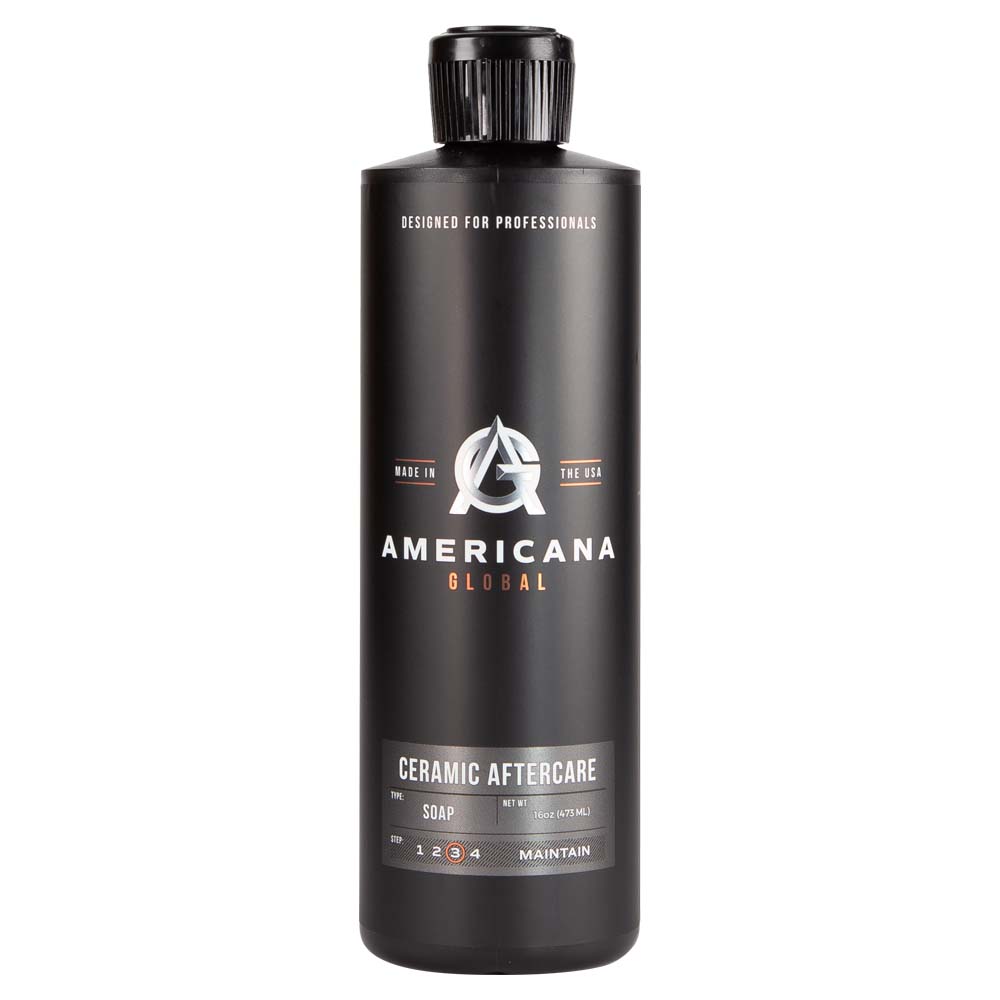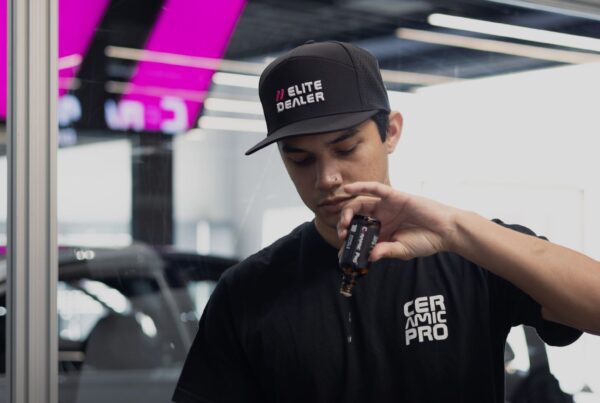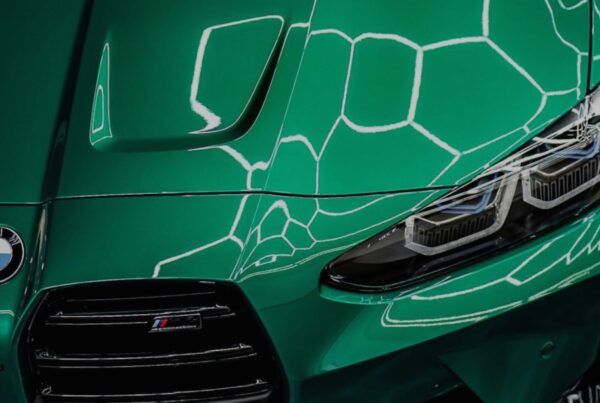Why Do Ceramic Coatings Wear Out Sooner Than Others?
In many ways, a ceramic coat is the most misunderstood paint protection option on the market today. The varying grades of coatings – different formulations – and flat out inaccurate or misleading marketing with some products cause more confusion about ceramic coats and their capabilities. However, one thing is consistent across most of these products – they’ll eventually wear out.
The key word in that last sentence is “MOST”. There are some ceramic coatings that are backed by lifetime warranties. But, if a ceramic coating is known as a semi-permanent layer of protection, how is it possible for a professional-grade coating like Ceramic Pro 9H to last a ‘lifetime’?
Funny you should ask – because quite frankly, that’s hard to believe. With a natural carnauba wax lasting a few months, and the best paint sealant products holding up to a year, how can a nano coating hold up for a lifetime? When you look at the way in which professional-grade coatings are prepped with paint correction, applied, and maintained, it’s not that difficult to comprehend how they’re able to hold up for more than a decade.
The question that really should be asked, is why most products classified as ceramic paint coating will always wear thin sooner than you’d expect. This is the discussion we’ll have today. In the information below, we’ll explain the science behind Ceramic Pro 9H, DIY ceramic coatings, and the broad range of ceramic wax or infused car wax products showing up online.
What Are the Types of Ceramic Coatings for Cars?
Before we get going – it’s time for a bit of a disclaimer. We’re going to get a little harsh in the information below. Mainly because we’re tired of seeing so many people manipulated by less-than-ethical business owners peddling watered down painted surface protection products. However, NOTHING we say below is OPINION. Every argument we make is backed by science and facts.
As we stated in the intro above, there is a plethora of paint protection products that are called ceramic coatings. They are applied to the car’s paint and are supposed to provide a protective layer to block UV rays, bird droppings, reduce swirl marks, and harden as a glass coating.
A genuine ceramic coating – such as Ceramic Pro products will accomplish three important tasks:
Will penetrate and infuse in microscopic imperfections: All vehicle surfaces are porous in nature. This means that the top layer is not perfectly flat. In fact, if you use a powerful microscope, you can see peaks and valleys in the substrate. A genuine car ceramic coating uses nanotechnology to seep into the microscopic imperfections – filling those gaps, hardening, and essentially creating roots that create a covalent bond.

A professional ceramic coating like Ceramic Pro 9H is a two-step application process. The base coat is applied – multiple times based on the package purchased, then a Top Coat applied on top. This allows the coating to last longer – with superior performance.
Will cure to 9H hardness: Once the ceramic car coating fills those imperfections and hardens on the vehicle’s paintwork, it should be as hard as quartz – or a grade of 9H on the pencil scale. This is possible when the formulation of the coating includes silicon dioxide and titanium dioxide (SiO2 and TiO2) – at percentages higher than 50%.
Has carrier solvents that enable multiple layers: While 9H is hard the best ceramic coatings will have the chemical ability to layer on top of each coat. This is accomplished by adding carrier solvents to the formulation. However, the tradeoff to adding carrier solvents is difficulty in application on the car’s paintwork. The margin of error of applying ceramic coating is narrowed, which is why professional-grade coatings are applied by highly-trained experts, in a controlled environment.
DIY nano ceramic coatings are formulated with reduced carrier solvents – for easier application. The downfall is that you can only apply one layer of most DIY nano coatings. Let me back track – you can apply multiple coatings, but they won’t layer on top of each other; so, you’re just wasting your time and money.
There are some spray-on coatings with lower SiO2 and TiO2 percentages that can layer on top of the paint surface like traditional wax as they are formulated with carrier solvents and other ingredients that allows this to occur.
Now that we’ve identified what a genuine nano ceramic coating is intended to accomplish, let’s explore the three type of products that are marketed and promoted as “CERAMIC COATINGS” for automotive paint.
Ceramic Spray Coatings
The newest kid on the ceramic coating block is the spray coating. These products are extremely diverse, with some closer to a true ceramic coating than others. Here are the facts.
There are three different blends in the spray-on category of ceramics.
Teflon-Based – The first class is the Teflon-based ceramic spray coatings. Teflon is a ceramic ingredient by definition and it’s mainly used as a high-temperature coating for cooking equipment, high-temperature tiles, and automotive performance applications.
The formulation is blended with polymers and other ingredients that coat the top substrate layer of the car’s surface. They do NOT penetrate the microscopic imperfections – similar with a wax sealant and are mainly provide nano coating benefits of hydrophobic properties – or create a slippery surface.
Silicone-Based: The second grade is a silicone-based spray, usually infused with SiO2 and TiO2. This is an upgrade from the Teflon sprays with regards to providing protective qualities. However, they likewise don’t penetrate and harden at the level of the concentrated nano coating.
The Hybrid Spray: The final grade is a hybrid of synthetic paint sealant with infusion of SiO2 for added hydrophobic properties.
Will Spray Coatings Wear Out?
YES. The maximum longevity of these spray-coatings is about 3 to 6 months. They can be layered on top of each coat with every application. So, if you enjoy constantly adding spray-wax on your vehicle every month or two, and simply want the water sheeting and some hydrophobic properties of nano coatings, this type of product might be good for you. If you’re looking for scratch resistance, this is not the product for you.
Just don’t expect significant paint protection, as they simply are not designed for maximum effectiveness.
DIY Nano Ceramic Coatings
The next level of paint protection is the DIY nano ceramic coating. This is basically a watered-down version of professional grade nano coatings that are designed for easier application as opposed to long-lasting protection. They can protect against minor scratches, swirl marks, and marring, but they are not equally formulated. So – results will vary based on several variables.
They accomplish this by reducing the percentage of carrier solvents in the formulation, reducing the percentage of Titanium dioxide or TiO2 (which is partially responsible for the hardness of the coating). This expands the margin of error with application – giving a window of optimal temperature ranging from 50 to 80 degrees F.
The main problem with DIY nano coatings is that you can’t layer them. Sure, you can apply multiple coats if you want, but you’re wasting your money, as when it dries, most of the formula is simply buffed off. This is due to the lack of carrier solvents in the formulation – which again – is the trade-off for easier application.
The main issue with this segment is the lack of consistency with the blends. There are some DIY coatings you can buy on Amazon for $10 per 30ml bottle – and others that will cost you up to $100 or more for the DIY ceramic coating kit. Some are easier to apply – but offer lack of protection. Others offer great protection – but have restrictions on application techniques.
Some products are filled with the same liquid product – but marketed and branded under different umbrellas – targeted to specific consumers in different regions across the globe. The point is – this segment is a true “buyer beware” category.
Will DIY Nano Ceramic Coatings Wear Out?
YES – within two years in most cases. Several of these manufacturers are introducing SiO2 Boost Sprays, which can be applied on top of their coatings – extending the hydrophobic properties. However, the protection against UV exposure, chemicals, tree sap and light scratches will be reduced – and thus, the coating’s effectiveness is decreased.
Professional Grade Nano Ceramic Coatings
The top-shelf and originators of the ceramic coatings for cars is the professional nano ceramic coating. This is the type of product that is only applied by certified and professional auto salons or detailers, in a controlled environment, and after significant prep work.
The main difference in these formulations is the inclusions of those important carrier solvents. This permits the coating to be layered multiple times. The base coat uses that nano technology to penetrate those minor imperfections – creating roots for lack of a better term for the coating to bond with the substrate.
Additional layers help to add depth to the coating – which each coating getting stronger. Depending on the package you choose – which is based on longevity you’re looking for based on your budget or need, the topcoat is added – which creates a super-slippery surface.
The amount of hydrophobic properties of a professional-grade Ceramic Pro 9H coating vs the best DIY coating might appear similar – the differences are truly showcased the longer the coating is on the vehicle. The DIY coating will gradually lose hydrophobic protection – while the pro-grade stuff does not reduce.
Does a Professional Grade Nano Coating Wear Off?
Sometimes – Yes. It really depends on the package you choose. Take Ceramic Pro 9H for example. It’s offered in three packages:
BRONZE PACKAGE – offers two years of protection. This is accomplished by adding a 1 layer of top coating on the clear coat of paint, plastic and wheels, and a specific formulation – Ceramic Pro Rain on the windshield and front-side windows. This is a great option for leased vehicles, or those who trade-in their vehicle every few years.
SILVER PACKAGE – offers five years of protection. It includes 1 layer of 9H coating on the paint, plastic, and wheels, 1 layer of Top Coat, and that window specific 9H Rain on the windshield and front windows.
GOLD PACKAGE – this offers a LIFETIME of PROTECTION. Meaning it doesn’t wear out when following the recommended inspections and aftercare. This is possible by adding 4 coats of durable Ceramic Pro 9H, an extra layer on exposed areas, top coating, and the Ceramic Pro Rain on front windows and windshield.
Ceramic Pro 9H recommends an annual inspection by the authorized installation center. During this inspection, they will add Top Coat sprays or other enhancers to continue to provide added protection and hydrophobic properties.
If you want to maximize the longevity of your ceramic-coated car, we recommend using a PH-neutral shampoo offered by Americana Global. Americana Global Aftercare is the ultimate 2-in-1 automotive shampoo that not only cleans but protects your ceramic-coated car.
Why It Makes Sense to Choose a Professional Ceramic Coating
With the slew of options available to car owners, it’s easy to understand how confusing and frustrating it can be to choose the right ceramic coating for your car, truck, or SUV. Keeping your car protected with Ceramic Pro 9H nano ceramic coating, not only are you providing the best paint protection coating possible but adding to your vehicle’s value.
Ceramic Pro 9H installation is added to your vehicle’s Carfax service report. This stays with the vehicle throughout its ownership, providing added value to your vehicle once you choose to trade or sell your vehicle. That’s just something that spray-on coatings and DIY ceramic coatings simply can’t offer.
Applying a ceramic coating is an investment in the protection of your vehicle. If you’re serious about protection for your vehicle paint, wheels, glass, carbon fiber, and your interior – click the button below to request a free estimate for your vehicle.








